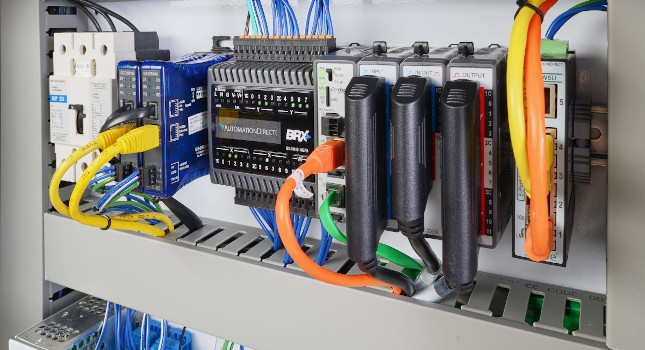Crucial Things That You Need to Know About PLCs

All of our surroundings are either now automated or will be automated in the not-too-distant future as we enter the realm of automated technology. Automation can be found all around us, from autonomous automobiles to automated trains at the airport to building sites and everything in between.
PLCs (programmable logic controllers) are a vital aspect of automation, and they are utilised in a wide range of applications in the industrial automation industry. PLC studies will assist you in staying current with the latest technology.
What Is a PLC?
A programmable controller, also known as a programmable logic controller, is a device that can be programmed to do a controlling job for other devices. A PLC is always watching the state of input devices and making logic-based decisions based on the user-created programs to control the state of output devices. This is how a PLC works.
There are elevators, which are examples of a mechanical system controlled by a PLC. Programs in the PLC are set up to move the elevator to any floor being asked for. Most elevators are programmed to take the most efficient route through any pending button presses and decide where to go based on that.
Programmable controllers are easy to set up and program. Most PLCs come with quick-release type screws that make connecting input and output devices quick. Editing features in PLCs make it possible to make changes to programs, correct mistakes and load new programs in a matter of seconds in most cases. It is possible to mix and match input and output devices in a PLC system because they can be put together in any way needed.
Programming Language Used
A user writes a program, which is then stored in the PLC’s memory and used to generate the necessary output control signals for a specific process. PLC programming has its own set of rules. The language of a PLC, as with other languages, contains grammar, syntax, and vocabulary that allow the user to construct a program that tells the CPU what to do. To do this, each PLC maker employs a somewhat different programming language.
Ladder logic, an enhanced variant of relay logic, is the programming language used to program PLCs. Ladder logic depicts a program as a graphical representation based on relay logic hardware circuit schematics. Specifying contact closure types and coils is part of ladder logic, as are programs that allow for the insertion of arithmetic functions, analogue control, complicated counter and timer operations, and so on.


 Why Continuous Training in Proposal Management is so Important
Why Continuous Training in Proposal Management is so Important  5 of the Latest Trends and Innovations in London’s Fire Protection Services
5 of the Latest Trends and Innovations in London’s Fire Protection Services  Navigating the Web: A Guide to Avoiding Scams On Job Boards
Navigating the Web: A Guide to Avoiding Scams On Job Boards  Your Online Guide To Exploring A Career In Lega
Your Online Guide To Exploring A Career In Lega  Investor’s Paradise: Strategies for Profits in the Share Market and Mutual Funds Wonderland!
Investor’s Paradise: Strategies for Profits in the Share Market and Mutual Funds Wonderland!